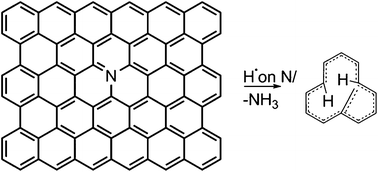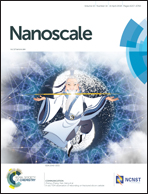The stability limits of highly active nitrogen doped carbon ORR nano-catalysts: a mechanistic study of degradation reactions†
Abstract
A new approach in electrode catalysis bearing immense potential for electrochemical technologies is the prospect of carbon-based electrodes. Pristine carbon nanostructures are relatively inert and modifications like nitrogen doping are known for their beneficial effects on the electrochemical activity of carbon nanomaterials in both alkaline and acidic media. However, the long-term stability of these materials, especially in an acidic environment, is rarely mentioned. Here, we evaluate the stability and long-term degradation of nitrogen doped graphene flakes as an oxygen reduction electrocatalyst with theoretical and experimental techniques. We assume that nitrogen dopants in the graphene sheet interact with e− and H+ at the electrode–electrolyte interface, leading to NH3 scission and continuous catalyst deactivation. With Density Functional Theory calculations, NH3 scission pathways of pyridinic, graphitic and pyrrolic nitrogen species were analyzed and compared under different operating conditions which are relevant for low and intermediate temperature fuel cells. The computational results are correlated with electrochemical measurements in solid acid fuel cells in a humidified oxygen environment at 240 °C.



 Please wait while we load your content...
Please wait while we load your content...